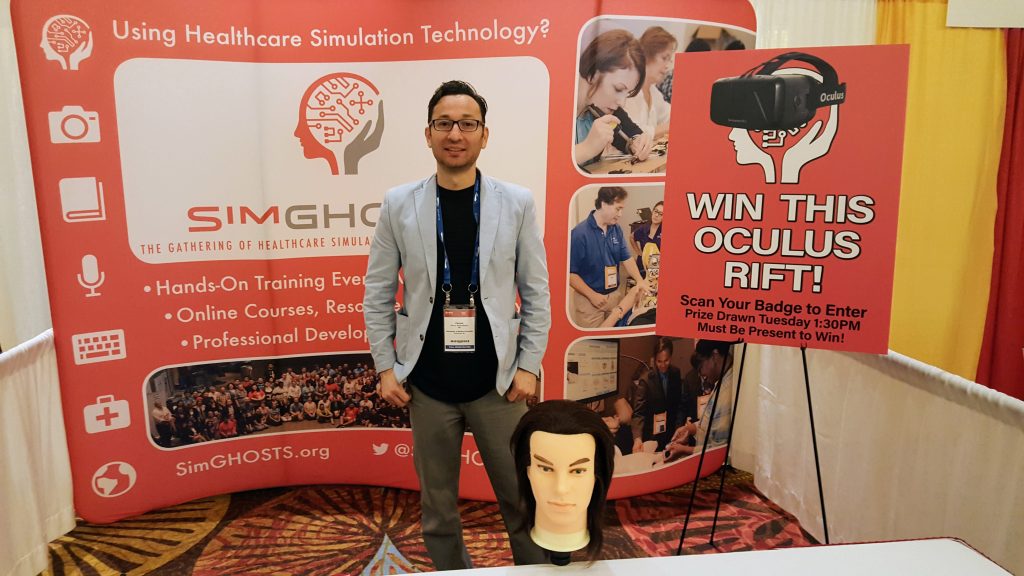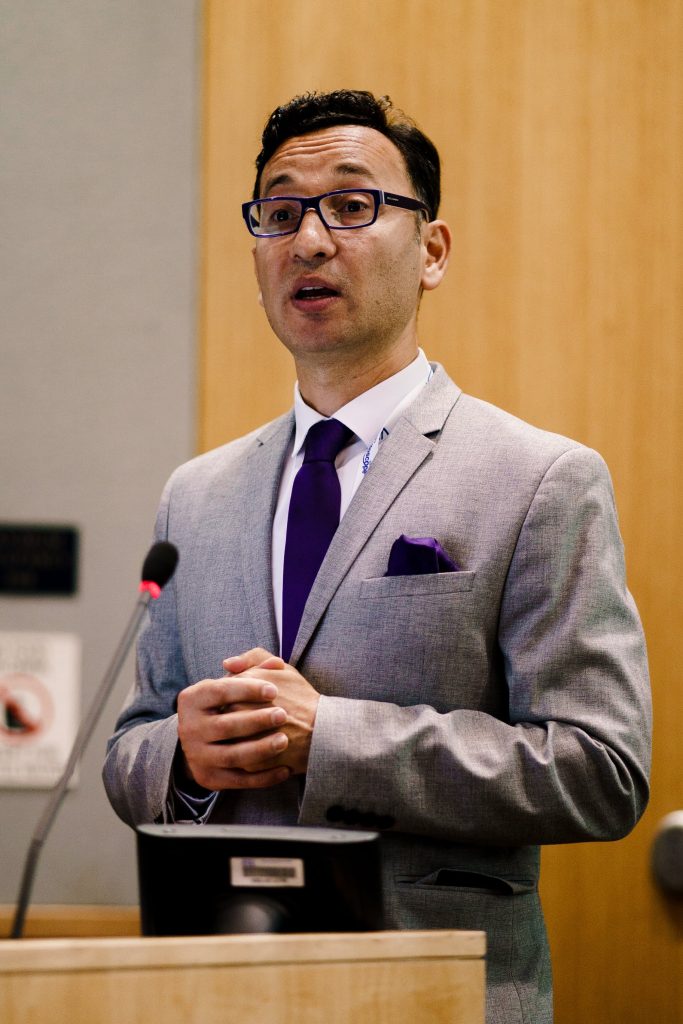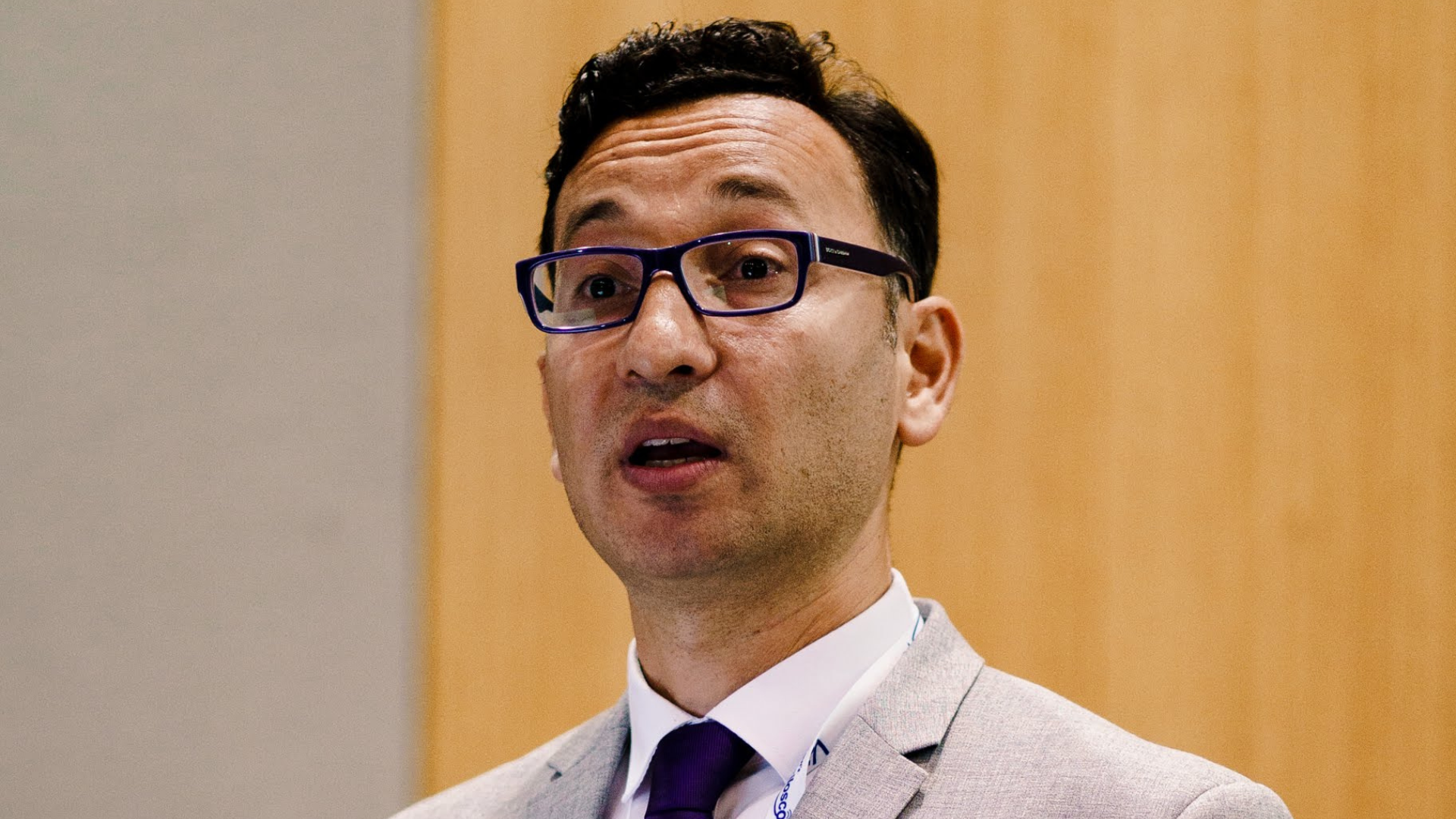We’re thrilled to welcome Ferooz Sekandarpoor to our SIM Face series, a space dedicated to spotlighting the influential figures who are shaping the world of simulation. Ferooz isn’t just any guest; he’s a real simulation enthusiast and an innovator, blending his love for tech with a fierce dedication to elevating medical education and patient care. His influence is truly global: he has helped establish simulation centers, virtually in all parts of the world. He dispelled the myth that exceptional resources are needed to achieve incredible results. Under his leadership SimGHOSTS has grown incredibly. In fact, enthusiasm is both his worst flaw and his best virtue, as he tells us himself in this interview. Sit back and get to know Ferooz better.
While it is true that simulation is a technique, it is also true that it relies more and more on technology. And so we could not fail to include among the SIM Faces Ferooz Sekandarpoor, Simulation Technology Specialist at the Faculty of the Medicine University of British Columbia and Past President of the Gathering of Healthcare Simulation Technology Specialists (SimGHOSTS). A vibrant innovator, he was able to blend technology with education, dramatically enhancing patient care and influencing other healthcare professionals with his groundbreaking work and infectious enthusiasm. And in this conversation we talked about simulation, of course – he told us, among other things, what he thinks is absolutely necessary to make simulation devices more relevant and engaging for healthcare professionals – but he also spoke about him, his successes and how past mistakes, from sources of shame, have turned into great lessons.

Ferooz Sekandarpoor
Ferooz Sekandarpoor is the Simulation Technology Subject Matter Expert at Faculty of Medicine at the University of British Columbia in Vancouver Canada.
Ferooz is the Past President of Gathering of Healthcare Simulation Technology Specialist (SimGHOSTS), and current board member.
Hi Ferooz, we are very happy to host you in this column. It is one of the most read. We want to introduce everyone to the iconic faces of simulation, those who in one way or another have made or are making a difference.
Perhaps you could start telling the readers of SIMZINE a bit about yourself?
It’s an honor to be featured in this column. My journey in healthcare simulation, spanning over two decades, blends my passion for technology with a commitment to advancing medical education and patient care. As a Simulation Technology Specialist at the University of British Columbia and a key member of SimGHOSTS, I’ve dedicated myself to exploring and enhancing the potential of simulation technology. This field is a unique intersection of my technical background and the evolving needs of healthcare professionals, with a clear focus on improving patient outcomes. I firmly believe that simulation goes beyond just technology: it’s about creating realistic, impactful learning experiences that adequately prepare healthcare workers for real-world challenges. I am excited to share insights and stories from my journey in this dynamic field, hoping to inspire and inform the vibrant SIMZINE community. Thank you for this wonderful opportunity to connect.
Along the way, you have met many people and worked with various simulationists, educators and technicians. Did you have a mentor who had a lasting impact on your work, and what was special about this person?
I’ve had the privilege of being mentored by numerous individuals, each contributing significantly to my professional journey. It would be unfair to single out any one mentor, as they have collectively shaped my path. This rich tapestry of guidance and inspiration has been invaluable. In particular, I am deeply grateful to the University of British Columbia, one of North America’s largest medical schools, for its nurturing environment and commitment to leadership and mentorship. Additionally, my involvement with SimGHOSTS has been instrumental in my growth. The leadership and community within SimGHOSTS have provided unique opportunities for learning, collaboration, and innovation. This blend of academic support from UBC and the vibrant, dynamic community of SimGHOSTS has been crucial in allowing me to thrive and make meaningful contributions to the ever-evolving field of healthcare simulation.

Based on your great experience, what do you see as the future of simulation technology in 10 years?
Based on what’s happening now, the next decade looks exciting. Virtual and Augmented Reality will make training incredibly immersive, and Artificial Intelligence (AI) is set to personalize learning and provide instant feedback. We’re also heading towards remote simulation, eliminating distance barriers to global learning and collaboration.
Expect patient simulators to become more realistic, closely imitating human physiology for complex scenarios. Plus, data analytics will be vital in ensuring training is evidence-based and effective.
There will be more interdisciplinary training, too, reflecting healthcare’s teamwork spirit. And we’ll see a greater emphasis on teaching empathy and ethical decision-making, crucial skills for patient care.
These predictions, while speculative, are based on current trends. If they hold true, healthcare professionals will be superbly prepared for future challenges, enhancing patient care and outcomes.
In your opinion, what are the most important things that need to be done to make simulation devices more relevant and engaging for people working in healthcare?
In my opinion, for a simulation device or simulator to really hit the mark in healthcare, it’s gotta have a few key features. First off, realism! It’s super important. We’re talking about devices that not only look but also act like the real deal, giving healthcare pros a near-authentic experience.
Then, there’s portability. It’s amazing when you can take these simulators anywhere, making training accessible in all kinds of settings, even remote ones.
Customization is another big one. The ability to tweak simulations to fit different skills and scenarios means that everyone, from rookies to seasoned pros, can get exactly what they need.
Feedback’s crucial too. Having a simulator that tells you how you’re doing, maybe even suggests how to improve? That’s gold for learning.
And of course, using the latest tech, like VR and AR, just takes the whole experience up several notches. It makes learning not just effective but super engaging.
So, yeah, nail these aspects, and you’ve got yourself a simulation device that’s both super useful and incredibly engaging.
Let’s talk a bit about yourself. You know, SIM Face is mainly for getting to know SIM people better. What is your worst flaw? And your best virtue?
Oh, talking about myself, huh? Well, if you ask around, you’ll find out pretty quickly that my biggest flaw is probably my supercharged passion. I get really into what I do, especially when it comes to simulation technology. Sometimes, I guess, my enthusiasm can be a bit overwhelming, maybe even a tad intimidating for others. I’ve been told it can be a lot to handle, and I’m sure some of you reading this can attest to that!
But on the flip side, my best virtue? I’d say it’s my genuine enthusiasm to share knowledge and experiences. I love diving into the details of simulation, exploring new advancements, and then spreading that excitement and understanding to others. It’s all about making those connections, learning together, and pushing the field forward. So, yeah, a super passionate guy who loves to share and learn – that’s me in a nutshell!

You’ve had so many leadership roles, such as president of SimGHOSTS, chair of British Columbia Simulation Network. Have you ever been afraid of disappointing expectations?
I’ve been truly blessed with incredible leadership roles, like at SimGHOSTS, and it’s been an amazing journey. But with leadership comes challenges, especially when expanding globally. SimGHOSTS’ growth into countries like Australia, Singapore, Argentina, the UAE, Saudi Arabia, Lebanon, and the UK, all with just one paid staff member and a volunteer board, has been a remarkable but daunting task.
This expansion tested our limits. Navigating different time zones, cultural nuances, and varied expectations, while maintaining our core mission, required a lot of flexibility and innovation. Despite these hurdles, our commitment to transparency and teamwork made it possible.
Having a team that trusts each other and communicates openly transforms challenges into shared goals. It’s been a learning curve, but it’s also been rewarding. It showed me that even with limited resources, a strong, united team can achieve incredible things. This experience has reinforced my belief in the power of collaboration and adaptability in leadership.
In the world of simulation what do you think is the best thing you have done?
In the simulation world, it’s tough to single out my best contribution. But a few things stand out. Firstly, being part of expanding SimGHOSTS globally has been a highlight. Helping grow this organization into an internationally respected entity has been both a challenge and a profound joy.
Another significant achievement is my involvement in designing and consulting for over 29 simulation centers around the world. Knowing that this work has positively impacted learners and patients, even indirectly, is incredibly fulfilling.
But if I have to choose, my time with SimGHOSTS, serving our global community, is the real standout. It’s not just about the organization’s growth; it’s about the connections made and the opportunities for learning and development it has provided. This experience truly encapsulates what I value most in healthcare simulation – the chance to make a lasting impact on education and patient care through innovation and collaboration.
You are one of the authors of the book Comprehensive Healthcare Simulation: Operations, Technology, and Innovative Practice. What motivated you to do this? Was it difficult?
Being selected as one of the authors for “Comprehensive Healthcare Simulation: Operations, Technology, and Innovative Practice” was an honor. The initiative, spearheaded by the SimGHOSTS team, was designed to draw upon the collective expertise within our community rather than publishing under a single entity. This collaborative approach allowed us to tap into a rich vein of knowledge and experience. The journey was indeed challenging but also exhilarating. We had the opportunity to work closely with a group of esteemed professionals in the field. The coordination and editing led by Dr. Scott Crawford, Lance Baily, and Stormy Monks were pivotal in orchestrating the contributions into a cohesive masterpiece. Despite the complexity of the project, the excitement of creating a ground-breaking resource with the best experts in the field made every challenge worthwhile.

If you could choose which simulationists or sim specialists to go have a beer with right now, who would you invite and why?
I’m more of a coffee enthusiast than a beer drinker, but the idea of gathering with colleagues is one I wholeheartedly embrace. The simulation community is a constant source of inspiration, and if I could, I would choose to spend time daily with this remarkable group. Specifically, I have gained so much from learning alongside Lance Baily, Nick Brauer, Scott Crawford, and Matt Charnetski. The collective wisdom and innovative thinking we’ve shared have been pivotal in my professional development. Each interaction with them is a chance to explore new concepts and refine our craft in simulation, making every moment spent together both educational and enjoyable.
I read in your Linkedin profile that you call yourself a “maker of things.” What do you mean?
When I describe myself as a “maker of things,” it speaks to my engineering mindset. My approach involves synthesizing ideas with available resources to innovate and create. Whether navigating complex technological challenges or streamlining management processes, I find satisfaction in crafting solutions that address intricate issues. Over the years, I’ve had the opportunity to consult with numerous industry vendors, offering solutions and ideas that enhance their offerings and contribute to the advancement of simulation technologies. My role as a ‘maker’ extends beyond mere creation; it’s about improving and innovating within the field of simulation to push the boundaries of what’s possible.
Our time is up. We usually conclude with our SIMZINE question. The one that’s a little off the cuff and irreverent. You told us the best thing you’ve done in the world of simulation. But will you also tell us the worst one? The one you’re ashamed of?
In life and in my career, I’ve come to see mistakes not as sources of shame, but as profound teachers. Every error has broadened my understanding and honed my decision-making. While I don’t believe in dwelling on past mistakes to the point of shame, I do reflect on them as valuable learning experiences. One decision that often crosses my mind is choosing not to pursue a PhD in Computer Science. This wasn’t due to lack of interest or ambition, but a conscious choice to dedicate precious time to my children during their formative years. Looking back, it’s not about regret but about the choices that shape our lives. I value the time spent with my family and the lessons learned from it as much as any academic achievement. Each decision, each path taken or not, has led me to the present, rich with experience and surrounded by a community that inspires and drives me.
Thank you very much, Ferooz. Chatting with you was a lot of fun. We wish you a good day!
READ ALSO






































